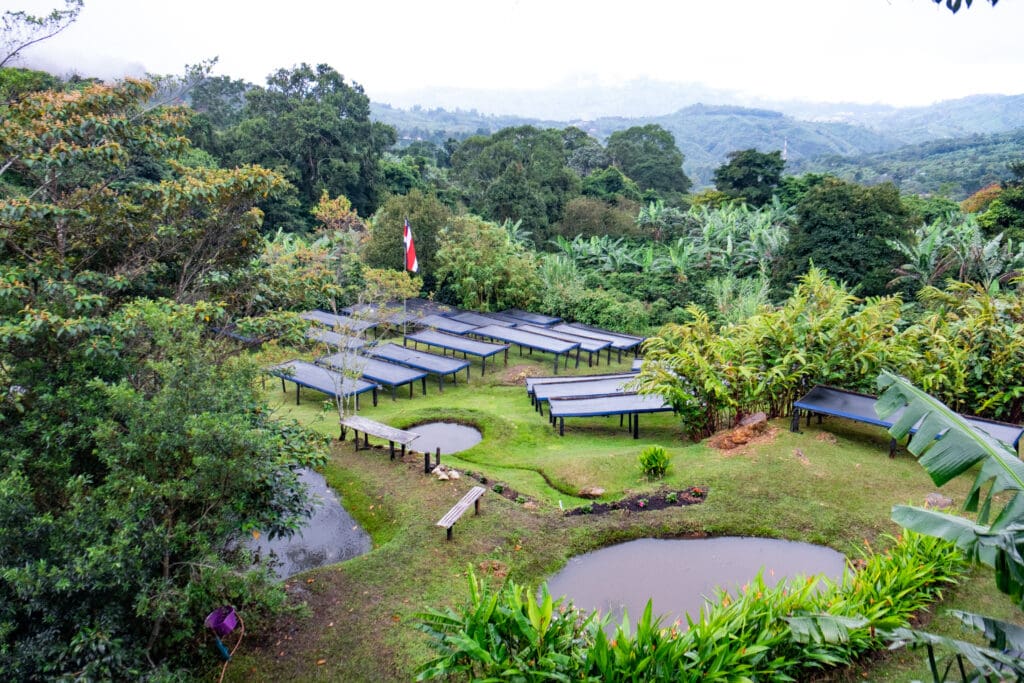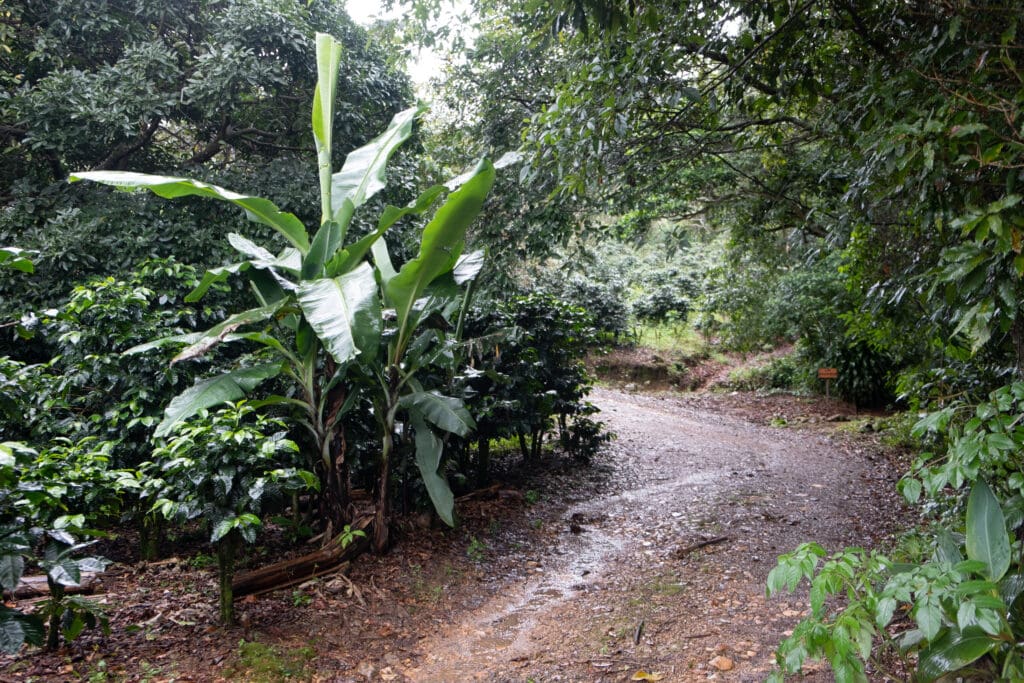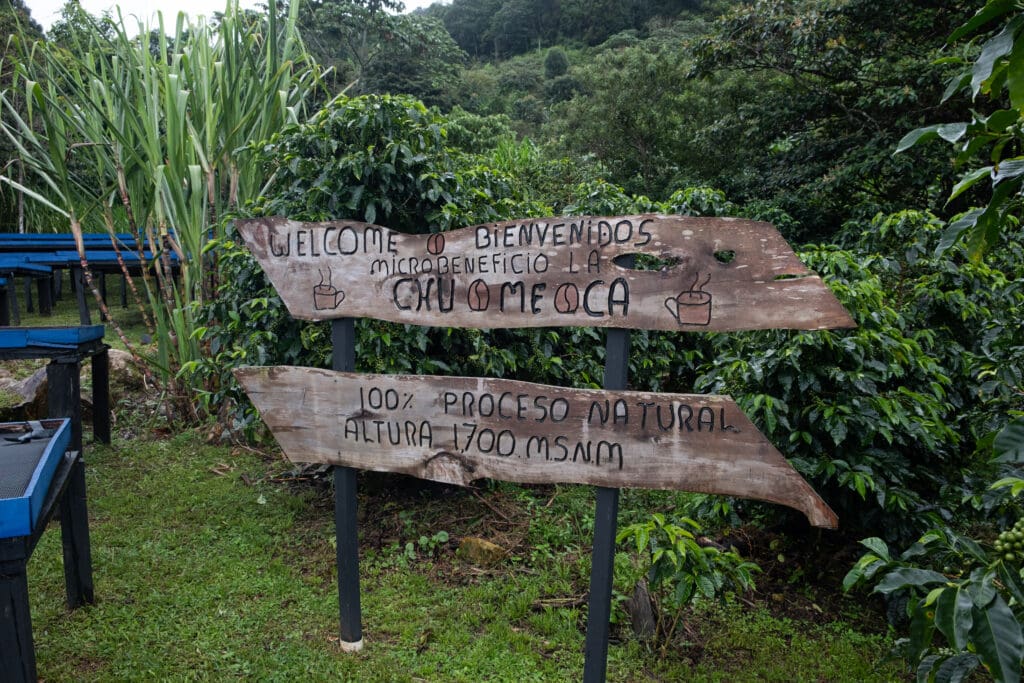La Chumeca Micromill is a family project started in 2014. Producer Martin Ureña Quirós began with the intention of improving the quality of the coffee from the family farm. Since its inception the mill has focused only on Natural processes, recently emerging as being aptly skilled with Anaerobic processing. “Chumeca” is a word used to express love and care and is commonly used in Martin’s family, lending itself easily to the family mill as well. La Chumeca Micromill has become well known in Costa Rica for its processes, many of which have featured on stage at national barista championships. Despite the mill’s success, Martin and his sons, Emilio and Pacho, remain humble and hardworking.
The family’s property contains a number of impressive spaces dedicated to production of coffee. Just a few meters from the entrance to their house is the “fermentation station,” consisting of a dozen stainless steel tanks lined up under a wooden structure. This space is monitored closely by mathematician and coffee farmer Emilio. Just past this fermentation space is a trail that leads through the forested area which acts as veins throughout the coffee fields. Beyond the trail is the drying space, surrounded by coffee trees and interlaced with well-maintained grass, flowers, and ponds. The drying area is overlooked by a tree house that boasts wonderful views of the drying beds, as well as the wide-stretching slopes of coffee full of Tarrazú character.
This lot of Catuai coffee underwent a double fermentation Natural process that the family calls the “777” process. Both aerobic and anaerobic fermentation is used while the cherries are still whole. Internal and external temperature and the pH of the fermentation environment are strictly monitored during the process. After both phases of fermentation are complete, the cherries are dried on raised beds. Throughout drying the thickness of the layer of cherries is managed to increase or decrease the speed of drying as needed in order to maintain the optimal drying time.




